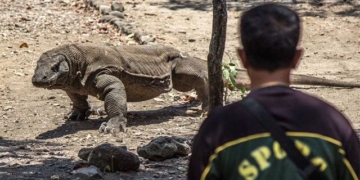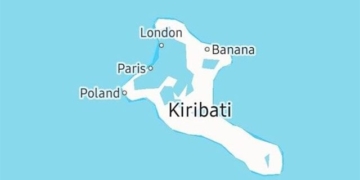The otters of Singapore have shown a remarkable innocence as they venture into residential areas, feasting on the prized fish of local residents. There have even been cases where they have devoured expensive koi fish that many Singaporeans keep in their private ponds.
It is difficult to determine how many otters live in this nation of 5.7 million people, but residents have reported an increasing number of attacks attributed to 10 otter families believed to be residing on the island.
In 2020, a group of otters known as the Zouk family (named after a local nightclub) whimsically “toured” a local condominium. The entire group then raided the koi pond of the building, frolicking and carrying away the koi from the pond.
Singapore is known as a densely populated and bustling country. However, amid the urban environment, there exists a thriving community of wild otters.
At the beginning of 2021, a group of otters sneaked into a local church and killed nearly 100 fish within a few days—about half of which were koi.
Just last week, a group of otters attacked a private koi pond in the northeast of the city. The 60-year-old owner reported that he had cared for some of the fish since they were small, and some of his long-time prized koi, which had grown to about 60 cm in length, were also devoured by the otters.

Smooth-coated otters are characterized by their long, flexible bodies. They have a slightly flattened short snout and a relatively round head. Their webbed feet are fully covered with skin, and they possess long, sharp claws. Their ears are larger than those of common otters, with rounded edges and a flap covering the ear holes. Their fur ranges from gray to reddish-brown, resembling that of common otters but is longer and smoother. The upper lip, cheeks, throat, and neck are a creamy white that extends to the chest. The belly fur is lighter than that on their back. A notable feature distinguishing them from other otter species is their flattened tail, which is paddle-shaped.
The average lifespan of a koi fish is about 40 years, according to the Singapore Zoo, but they can live much longer; a Japanese koi has been known to live up to 226 years. Additionally, Philip Johns, a biologist at Yale-NUS College in Singapore, noted that koi in Singapore are extremely expensive. Some rare ornamental koi can cost hundreds of thousands or even millions of USD, depending on their colors and patterns. A Japanese koi auction in 2018 saw one fish sell for $1.8 million.
The Straits Times quoted My Paper reporting that from 2015 to 2016, a group of otters destroyed about $64,000 worth of koi belonging to a homeowner on the resort island of Sentosa in Singapore. In the same year, otters cleared out a koi pond at Shangri-La Resort, located on the same island, with the estimated value of the fish at around $80,000.

Otters are a native species of Singapore.
Otters are indeed a native species of Singapore, but there were times when they nearly faced extinction here—mass development in the 1960s and 1970s destroyed their habitats and led to widespread pollution. However, by the late 1970s, as Singapore began addressing environmental issues, otter families gradually returned.
Most of the otters currently living in Singapore are smooth-coated otters (weighing about 10 kg), with a few remaining being small-clawed otters. According to the national park system, Singapore’s otter population is still classified as critically endangered, but Johns mentioned that the number of otters in Singapore is gradually increasing.
After the otters’ “tours,” some Singaporeans have begun to view otters as a nuisance. In 2020, following a series of ornamental fish attacks, a reader of the Straits Times wrote a letter suggesting ways to keep these animals out of urban areas.
“Wild boars have never been encouraged into urban areas; otters should be treated the same way, no matter how cute they look,” reader Ong Junkai wrote.
In a 2021 post about wildlife, a Facebook commenter wrote: “Well, maybe we should release a few crocodiles into the pond to see if they can help out.”

A wild otter eating fish at Marina Reservoir in Singapore.
Some residents jokingly suggested that the otters, gathering in groups of 14 to 18, should be penalized for violating the country’s COVID-19 safety regulations, which have limited group sizes to under two, five, or eight people at various times over the past few years.
The growth of the otter population in urban areas can be partly attributed to Singapore’s coronavirus containment measures, which nearly locked the country down completely from April to June of last year.
Johns stated: “When people were socially distancing, the otters became bolder. Essentially, no one was out on the streets. When you looked out from your balcony, you would see empty roads, and I think at that time, the otters ‘claimed’ dominance over all the streets.”





















































